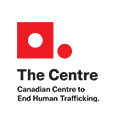How does human trafficking occur?
Usually, a person is recruited, then they are isolated or transported, and ultimately they are forced to provide labour or a service.
- Recruitment: Sex traffickers approach potential victims in a variety of ways, including pretending to be a potential boyfriend or friend, contacting them via social media such as Facebook, posting newspaper or Internet ads for jobs and opportunities, or even threatening or kidnapping them. Often, false promises will be made to the victims about money, new clothes, work or education opportunities, financial aid for their family, etc.
- There are two types of Pimps:
1) The Romeo Pimp will draw a young person into their lives with promises of love and affection and access to a more glamour lifestyle
2) Gorilla Pimps find young victims and use violence and sexual assault as a way to ‘break’ that individual and flip them into ‘the game’ - Many traffickers prey on victims who are looking for the promise of a better life, a job opportunity or a romantic relationship.
- Transportation/Isolation: Victims are often (but not always) moved around by traffickers, to isolate them from family and/or people they know or areas that are familiar to them. Victims of sex trafficked are moved from hotel to hotel, province to province. Individuals subjected to labour trafficked are isolated, sometimes on rural properties which little contact with the outside world.
- Exploitation: Exploitation is the key element of human trafficking offences within the Criminal Code of Canada. Exploitation occurs when someone forces another person to provide labour or a service by having them fear for their safety, or the safety of someone known to them.
- Traffickers often use violence, intimidation and/or deception to make victims do as they say.
Why Does Human Trafficking Happen?
- The business of human trafficking is often characterized as a “low risk/high reward activity” because the crime is clandestine and difficult to detect and investigate. This means that there are relatively low prosecution rates worldwide. Unlike the sale of drugs or guns, human beings can be sold over and over for the financial or material benefit of the traffickers, making this crime extremely lucrative. Modern justice systems still rely heavily on witness testimony to prove that the trafficking has occurred. Due to the trauma experience during the trafficking, many victims will gaps in their memories or become overwhelmed and/or afraid in court.
- The United Nations has estimated that this illegal activity generates approximately $32 billion (US) annually for its perpetrators. Recent Global Modern Slavery Index estimates put the number of modern slavery/human trafficking victims at 40 million worldwide today (2017).
Victims don’t come forward to the police or organizations for help for a variety of reasons such as:
- Not recognizing that they are a victim of human trafficking
- Lack of knowledge of their rights, lack of documentation
- Cannot reach out for help due to language barriers
- Fearful of law enforcement and lack of trust in organizations that provide assistance
- Threats made to the victim and towards people they know or to their families
- Foreign Nationals with precarious status may be afraid to report for fear of being deported
- Those who are labour trafficked may not want to report because it will put fellow workers at risk
For additional information please see Frequently Asked Questions on human trafficking at the following link: http://www.rcmp-grc.gc.ca/ht-tp/q-a-trafficking-traite-eng.htm
What YOU can do:
Learn the warning signs of human trafficking and make sure those around you know them as well. It may simply take one person to report suspicious behaviour to uncover cases of human. Here’s what else you can do to help:
1) Learn about Trafficking and become aware of the indicators of human trafficking, the vulnerabilities and grooming and luring practices used by traffickers. Share this information with your friends, on social media and young people in your life.
2) Speak Up! Sexual exploitation and forced labor are driven by demand. Become an advocate for women and girls who are exploited in the commercial sex industry and for those who are being enslaved by their employers. Start a dialogue with your kids, coworkers and neighbors about human trafficking.
3) Challenge it on a local, provincial and federal level. Find out what your representatives are doing to address human trafficking in Canada. Choose to support ethical business practices that produce goods and services that are free of slavery and that promote supply chain transparency.
4) Stop it, if you suspect this is happening in your community or to someone you know. Call police, crime stoppers or a sexual assault line. Here is a list of numbers to call and resources for victims and families. You can also volunteer your time with a front-line organization assisting survivors of human trafficking.
5) Change it by supporting the Canadian Centre to End Trafficking as we work to restore freedom and dignity to those affected by this crime.
Learn more about The Signs of Human Trafficking here.
